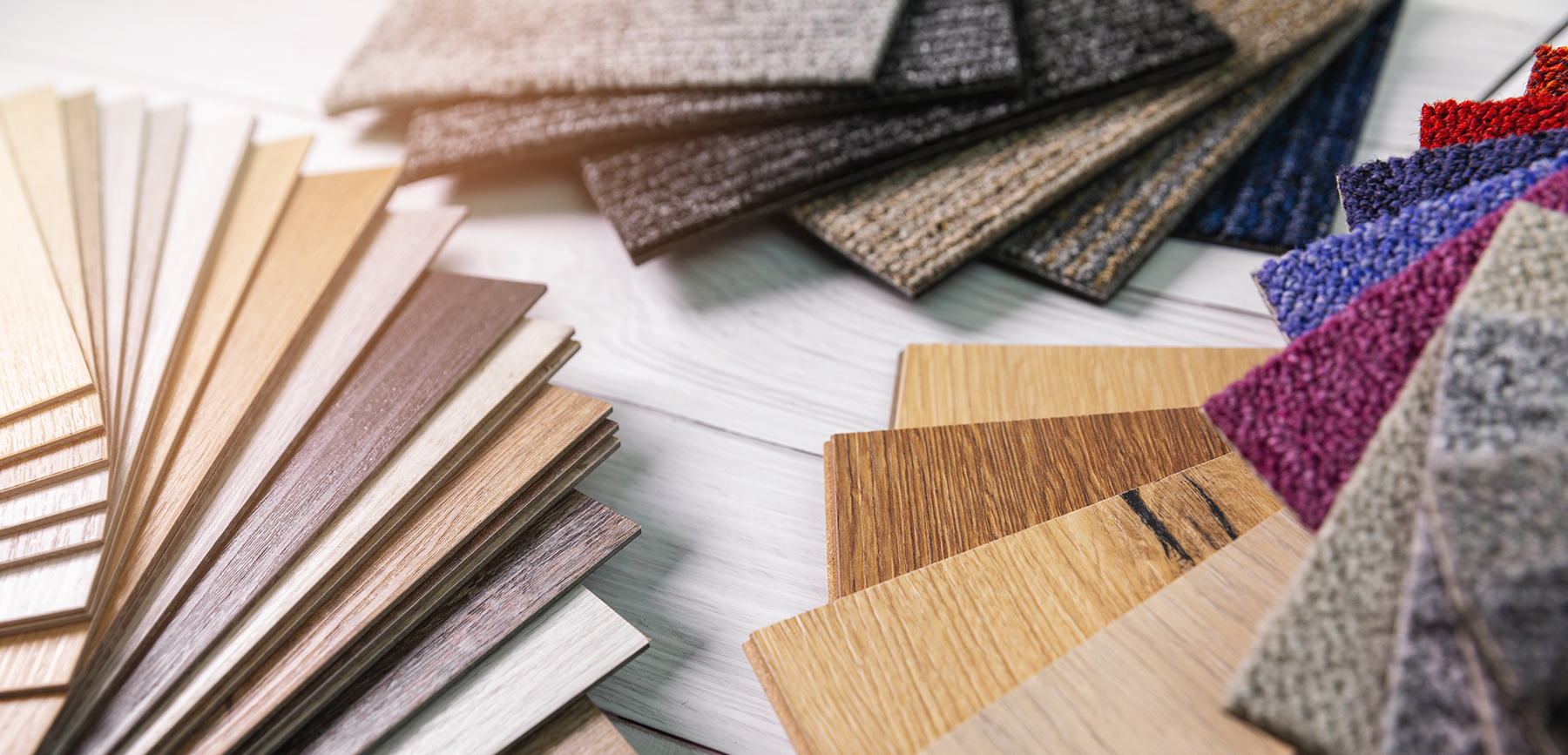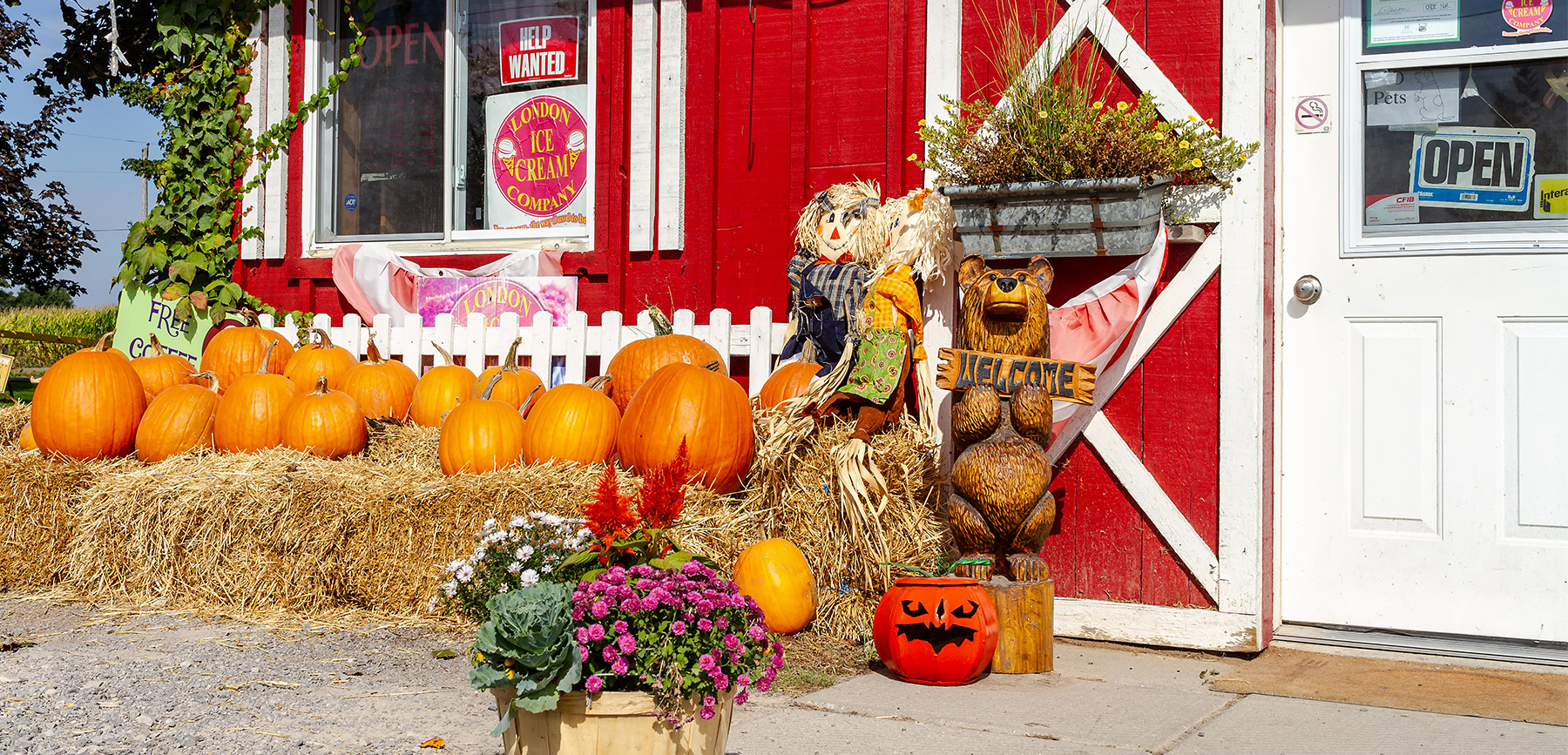
A Guide for Local Flooring Companies to Dominate Neighborhood Searches
For flooring and carpet companies, local visibility is everything. Homeowners want to see, touch and compare flooring options before they make a purchase. A smart local marketing strategy ensures that your business is the first place they visit, both online and in-store.
In an industry where texture, color and quality drive decisions, local flooring businesses must make a strong first impression. Most customers begin their search for new flooring on Google or other search engines, social media or through recommendations. According to ROI Minds, more than 75% of local buyers use search engines to find flooring contractors. Many consumers end their search by walking into a showroom, feeling samples and getting advice from a trusted expert.
Becoming the go-to flooring company in your neighborhood requires a well-balanced local SEO strategy. This helps your business become more visible in local searches, specifically within Google’s Local Pack, Bing Places or Apple Maps. High rankings not only increase visibility, but should lead to more clicks, calls and showroom visits. It will also provide more reviews, foster greater trust and give your business a competitive edge over others in the industry.
Successful flooring businesses should also invest in visual storytelling, seasonal promotions and a strong online reputation. These elements position your company as the top choice for flooring in your area.
Here’s a closer look at how your flooring business can dominate local searches and convert online interest into in-store foot traffic.
Driving Foot Traffic to Your Showroom
While maintaining a quality digital presence is significant, your showroom remains the closer. Flooring is ultimately a visual experience, so the goal of your online efforts should be to get potential buyers to visit in person. That means meeting them where their buying journey typically begins: online.
To drive showroom traffic, flooring companies need a multi-faceted local SEO strategy that helps them outrank local competitors, generate more leads, and build long-term visibility. Here are some key components that local flooring businesses should focus on:
1. Optimize your Google Business Profile (GBP)
Claiming and fully optimizing your GBP is a good starting point for any local business aiming to increase its online presence. According to Google and esearchlogix.com, businesses with complete and accurate GBPs get 7x more clicks than those without. Yext also notes that consumers are 2.7x more likely to consider your business reputable if it has a completed GBP.
With this listing often being the first impression customers get of your business in local search results, ensure that your GBP includes:
- Accurate and up-to-date NAP (name, address and phone number) information
- Up-to-date business hours and service areas
- Correct primary and secondary categories like “flooring contractor” or “carpet retailer”
- High-quality images of your showroom, products, team, installation process and project transformations
- A keyword-rich business description detailing services, coverage areas and what makes your company stand apart from competitors
- Frequent posts surrounding projects, promotions, tips, service announcements or answers to consumer questions
Businesses should also encourage satisfied customers to leave reviews and respond to them consistently. Positive reviews increase trust and can influence local search rankings.
2. Target “near me” and location-based keywords
To capture local intent, integrate geo-specific keywords throughout your content and advertising. Examples include:
- “Best carpet showroom in [City]”
- “Hardwood flooring installation in [ZIP code]”
- “Luxury vinyl plank near me”
Various tools like Google Keyword Planner, Ahrefs or SEMrush can help identify high-intent local keywords that your customers are using. Answering questions containing keywords like “What flooring company in [City] offers the best value?” or “What flooring is most budget-friendly for [room type]?” can help educate consumers while positioning you as a local expert.
3. Invest in geo-targeted advertising
Geo-targeted ads allow you to appear in front of your ideal audience and are often most effective when paired alongside print advertising methods. While homeowners are the most frequent targets for flooring businesses, advertising can also be directed at contractors or interior designers. Some benefits of geo-targeted ads include:
- Instant visibility in hyperlocal areas
- Custom targeting by zip code, income, demographics or device
- Effective pairing with traditional print advertising
- Quick way to boost brand awareness
Best Version Media can assist with your digital advertising needs. BVM offers geo-targeted social media and display ads to consumers within your designated area, ensuring your brand reaches local homeowners actively looking for flooring solutions.
4. Build an optimized website experience
Your website should essentially act as an extension of your showroom. This can be done by:
- Clearly listing all products and services
- Including an easy-to-use interface and navigation menu
- Prominently displaying contact information
- Featuring project galleries, testimonials and calls-to-action (CTAs)
- Making sure pages load quickly and are mobile responsive
According to Red Website Design, 57% of internet users will not recommend a business that they believe has a poorly designed website, while a 2024 survey from Hosting Advice notes that 75% of consumers have skipped an online purchase due to an outdated or unprofessional-looking website.
5. Master on-page SEO for local pages
Ensure each page of your website is optimized for local and flooring-related searches. Best practices include:
- Title tags and meta descriptions – These should include flooring keywords and your service area.
- Header tags (H1, H2, H3) – Header tags help structure content. H1 tags should be used for the main topic, H2 for section headings and H3 for subsections and details.
- Image optimization – Use descriptive alt text and file names for images, such as “oak-hardwood-floors-[city].jpg.”
- Google Maps embed – Add a Google Maps snippet showing your exact business location to your homepage or contact page.
- Schema markup – Using schema markup helps search engines understand your business. Local flooring businesses should be sure to use LocalBusiness schema. According to backlinko.com, 72.6% of websites on the first page of Google Search results use schema.
- Keyword-rich URLs – URL structure should be descriptive for each page while utilizing keywords related to specific service pages, such as “/wood-flooring-installation” or “/carpet-replacement-[city].”
6. Improve technical SEO
Technical SEO ensures your website is fast, secure and mobile-friendly, factors that are critical for user experience (UX) and ranking. Some key elements to focus on include:
- Site speed and Core Web Vitals – Speed is crucial when it comes to local search, as a slow-loading website can turn customers away toward your competitors. Core Web Vitals should be optimized using tools like PageSpeed Insights.
- Mobile-optimization – Most searches occur on mobile, with over 60% of web traffic currently coming from mobile devices. This means local flooring businesses need to have a mobile-optimized site to drive more traffic to their showroom.
- HTTPS security – Having HTTPS is one of the most important trust signals for local businesses, as most customers will leave a site that is labeled as unsecure.
- XML sitemap – This helps search engines crawl and index your content more efficiently by listing all the important pages on your website.
- Fix broken links and redirect outdated URLs – Broken links, or 404 errors, create a poor UX and signal to search engines that your site may be outdated. Updating links and redirecting URLs can help avoid this.
- Location-based page titles – Location-based page titles help consumers and search engines understand what your business is about and what area it serves.
7. Use smart keyword research
Flooring businesses should target long-tail keywords that match user intent. These phrases often reflect real search queries such as:
- “Wood flooring installation in [City]”
- “Best flooring for basements in [Zip code]”
- “Eco-friendly carpet options near me”
Some top-performing local flooring keywords may include:
- “Flooring installation contractors”
- “Floor installation service”
- “Flooring contractors near me”
- “Wood floor installers”
- “Carpet replacement”
- “Best flooring companies in [City]”
Various tools such as Google Keyword Planner or SEMrush can help businesses find relevant high-volume, low competition keywords. Once selected, they should be naturally incorporated into a website’s content, matching intent throughout a customer’s buying journey.
8. Create local, high-quality content
Quality, informative content can help foster trust and boost visibility. Flooring businesses should focus on topics that inform and engage local audiences, like:
- Blog posts – Focus on educating customers on flooring types, installation processes, maintenance tips or seasonal trends.
- How-to-guides – Create guides on various flooring tips, such as how to maintain hardwood floors year-round.
- Project case studies and client stories – Feature appealing and successful completed projects that show potential customers exactly what you offer.
- Short videos – Product showcases, time-lapse installations and DIY tips can all be appealing for potential consumers.
- FAQs – Include a section(s) that answers voice-search-friendly customer questions.
- Room visualizers – Adding a room visualizer to your site can be highly engaging as it allows users to preview your flooring in their own home.
9. Create individual pages for each service location
To maximize local search visibility, businesses should create dedicated pages for each flooring service they offer, and each service location. This helps obtain more targeted search traffic while allowing customers to seamlessly find exactly what they are looking for. According to seosandwitch.com, location-specific landing pages can increase local rankings by 21%. These pages can include:
- Local testimonials
- Photos from a project within the specific service area
- FAQs relevant to the location
- Service-specific keywords
10. Build local backlinks
Getting other local websites to link to yours helps build authority. Flooring businesses can try to obtain backlinks through multiple sources, including:
- Local directories
- Business associations like chambers of commerce
- Partnerships with interior designers, contractors and realtors
- Features in local blogs or news outlets
- Local sponsorships and event participation
Businesses must create quality and valuable content that others want to link to. It is also beneficial to search online for mentions of your business that might not have links, and then reach out to request a link.
11. Manage reviews and online reputation
Customer reviews are essential for local credibility, and customers should be encouraged to leave reviews on Google or other platforms through follow-up texts or emails requesting reviews, or by offering incentives like discounts or giveaways when appropriate.
All reviews should be responded to, both positive and negative. Bright Local’s 2025 Local Consumer Review Survey notes that 89% of consumers expect business owners to respond to all types of reviews. Some review platforms local flooring businesses should focus on are:
- Yelp
- Angi
12. Maintain consistent business listings
While your GBP is the primary focus, it is imperative for local flooring businesses to remain consistent across all online listings and directories. Inconsistent listings can confuse search engines and hurt your ranking, as Bright Local notes that 62% of consumers will avoid using a business if they find incorrect information online. Businesses should ensure:
- NAP data is consistent everywhere online
- They aren’t using multiple address formats, like “Street” vs. “St.”
- Hours, email and services are updated
Some directories to check include:
- HomeAdvisor
- YellowPages
- BBB
- Local chamber or trade directories
According to HubSpot, 92% of searchers will pick businesses on the first page of search results, while 28% of local searches result in purchases. This makes the above steps crucial for your business to be favored by search engines.
Showcasing Flooring Quality Through Visual Storytelling
Flooring is a highly visual product, with homeowners wanting to see texture, tone and finish before making a purchasing decision. Digital tools like SEO and paid ads bring customers to your showroom, but visual marketing is what sells the experience. Flooring businesses can highlight visual quality through:
1. Print ads featuring swatches and textures
One of the most effective tools in flooring marketing is a print ad with high-quality and detailed product swatches that provide a tactile, luxurious brand feel, which digital ads can’t always replicate. High-resolution images showcasing texture, wood grain or finish options help customers visualize flooring in their own space. According to worldmetrics.org, 78% of consumers say they are more likely to recall a brand after receiving printed marketing materials.
Best Version Media’s print solutions can put your brand directly in front of high-value households in local neighborhoods. Readers can view product photos, see sample combinations and mentally place your floors in their homes.
2. Leverage Instagram Carousels, Reels and Stories
While local flooring businesses can utilize multiple social media platforms, Instagram is a priority as it can essentially function as a modern-day swatch book. Businesses can post before-and-after projects, showroom walkthroughs and product close-ups. Posts can feature local hashtags, geo-tags and short captions to enhance reach and drive local interest.
Video content often generates high engagement. Short, mobile-friendly clips that highlight flooring benefits, such as scratch resistance or pet-friendliness, can truly be effective.
3. Feature real client transformations
Nothing fosters trust quite like seeing real results. Flooring businesses should highlight completed installations with side-by-side before-and-after images. Paired with short customer testimonials, brief information about the product used and a CTA, these visuals not only build social proof, but can also inspire your next customer to take action.
Maximizing Seasonal Sales Events
Flooring purchases often coincide with key life moments, such as moving into a new home, remodeling or preparing for the holidays. Aligning your marketing with these seasonal transitions can help keep your business top of mind when customers are ready to buy.
1. Create timely promotions
Promotional campaigns should be planned around high-traffic seasons:
- Spring: Home improvement and renovation season begins.
- Summer: Real estate turnover and new move-ins drive new home projects.
- Fall: Homeowners prepare for holiday entertaining and gatherings.
- Winter: New year refresh projects and interior upgrades are planned.
Some examples of seasonal offers include:
- Spring: Discounted installation on hardwood flooring during spring sales
- Summer: Back-to-school promotions targeting busy families in late summer
- Fall: “Get ready for the holidays with 10% off hardwood”
- Winter: “Buy carpet for two rooms, get the third free”
Flooring businesses should promote discounts, package deals or installation bundles at key times. Limited-time offers drive urgency, perhaps leading to more conversions.
2. Advertise in community publications
Neighborhood magazines and local publications remain trusted sources for homeowners. Print advertising strategies can be enhanced by pairing with digital social media or display ads during these promotion windows. Including a QR code in your print ad that leads to your seasonal landing page can help bridge the gap between offline and online. According to writersblocklive.com, businesses that combine direct mail and digital strategies see a 28% increase in conversion rates, and a 450% increase in response rates.
Marketing Mistakes Local Flooring Businesses Should Avoid
Even the best local flooring companies can hurt their own success by overlooking small, yet critical elements in their marketing strategy. Here are some of the most common pitfalls to avoid:
- Neglecting to update your GBP – Many flooring businesses frequently change hours, services or contact details. An outdated or incomplete GBP can hurt visibility in search results and Google’s Local Pack. In addition to accurate info and up-to-date photos, businesses should be sure to select a detailed and correct primary business category, like “Flooring Contractor,” rather than just a generic one.
- Not showcasing project photos or videos – Flooring is a visual industry, and examples of your work is what often leads customers toward a commitment. Whether on your website, GBP or social media, high-quality images and videos can help build trust. These can include before-and-after installation photos, close-ups of hardwood, vinyl, tile or carpeting, job-site photos of your team in action or walkthroughs of completed projects. Media can demonstrate quality while giving you an edge over businesses that aren’t uploading project photos or product images.
- Using the wrong or vague keywords – Using the wrong or vague keywords means that your business is likely to get buried in search results. Long-tail keywords can be utilized with specific product, service and location information. Keyword stuffing should also be avoided as businesses should use natural language that speaks to a customer’s intent. Businesses need to regularly audit keywords and adjust based on what’s driving traffic and leads.
- Failing to monitor results and adjust your strategy – All local businesses need to monitor and analyze results in order to optimize their marketing strategy. Without tracking performance, it’s impossible to know what’s working. Many key performance indicators (KPIs) such as organic traffic, conversion rates, bounce rates, lead quality and cost per lead can provide valuable insights. Tools like Google Analytics, Google Search Console and UTM parameters can help track and attribute results by channel. SEO and advertising strategies should be adjusted based on the results, and businesses should keep in mind that it takes time to see success.
Best Version Media Can Help Your Flooring Business Increase Its Local Presence
Best Version Media can help your flooring business employ a hyperlocal, multi-channel strategy that appeals to customers at every stage of the buying journey.
BVM has more than 1,300 publications across the U.S. and Canada that allow local businesses to be seen within their community through print advertising. BVM can also help your business increase its online presence through management of online listings and reviews, and geo-targeted display and social media ads.
Connect with BVM today to see how your flooring company can implement a marketing strategy that drives results.
FAQs
1. How can I get more local customers to visit my flooring showroom?
To attract more local customers to your flooring showroom, start by optimizing your Google Business Profile (GBP) with updated hours, service areas and high-quality showroom images. Combine this with a local SEO strategy that targets “near me” and location-specific keywords like “flooring contractor in [City]” or “carpet showroom near me.”
Additionally, use geo-targeted ads and print advertising in trusted local publications to stay top of mind. Ensure your website is mobile-friendly, showcases your products and includes clear calls-to-action (CTAs) encouraging showroom visits. Reviews, social media visuals and seasonal promotions also drive foot traffic from search to store.
2. What’s the best way to improve my flooring company’s visibility on Google?
To boost your flooring company’s visibility on Google, focus on local SEO and a fully-optimized Google Business Profile. Make sure your business name, address, phone number (NAP) and hours are consistent across all online listings. Use location-based keywords throughout your website and GBP description (e.g., “hardwood flooring installation in [City]”).
Regularly post project photos, respond to reviews and embed Google Maps on your site. Adding schema markup, improving site speed and creating city-specific service pages will also help your site rank higher in Google’s local search results and Local Pack.
3. Why is visual content important in flooring marketing?
Visual content is essential in flooring marketing because customers want to see texture, color and finish before making a decision. Photos and videos of installations, product swatches and transformations build trust and help potential buyers envision your flooring in their own space.
Instagram Reels, before-and-after shots and showroom walkthroughs can boost engagement and reach. According to industry stats, video content can increase conversions by up to 80% and help customers retain information about your brand. High-quality visuals also differentiate you from competitors and enhance your credibility.
Written by Cody Kluge
BVM Digital Content Specialist





